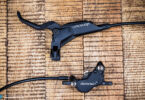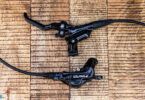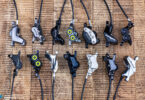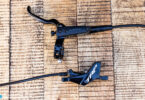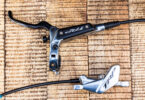Not in the mood for a big, hot sweaty backpack? But where are you going to put all your stuff? The solution: hip packs, bum bags, waist packs. Call them what you want, they are more popular than ever and we’re big fans too. Reason enough for us to pick 24 of the most exciting models and put them through a thorough comparison test.

If your backpack weighs a ton and you tend to carry a set of spare clothing, or if you’re crazy enough to ride with half of your camera equipment on your back, a hip bag might not be your best choice – and this test uninteresting. But if you’re looking for a practical way to carry all your trail essentials, like basic tools, a mobile phone, energy bars and even a light windstopper without having to schlep around a huge backpack, a fanny pack might just be what you’re looking for! Perhaps you’ve already jumped on the hip-wagon: In both cases, this test will tell you pretty much everything you need to know about your next hip bag.
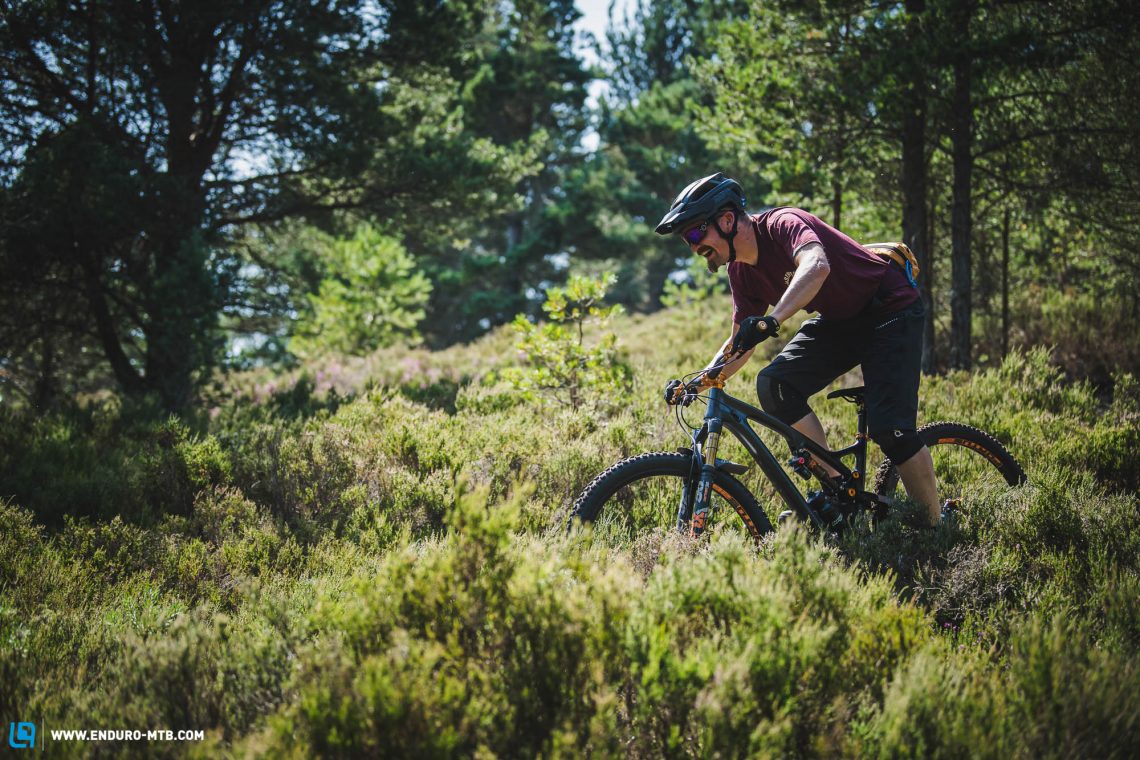
The market for hip packs is huge and diverse
Right now, the market is crammed with waist bags of all shapes and sizes. Some come with a hydration bladder, others can take a bottle on the side – and some don’t even bother about your vital fluid intake. Like with all our group tests, the ‘Best in Test’ proved to be the best all-rounder – but not everyone is looking for the same features. By picking 24 of the most popular models, we were able to test a wide spectrum of hip packs, from minimalist race straps that fit under a jersey to a gigantic 5-litre monster with hydration bladder. Given the wide range of models, we’re able to recommend the right model for each size category.
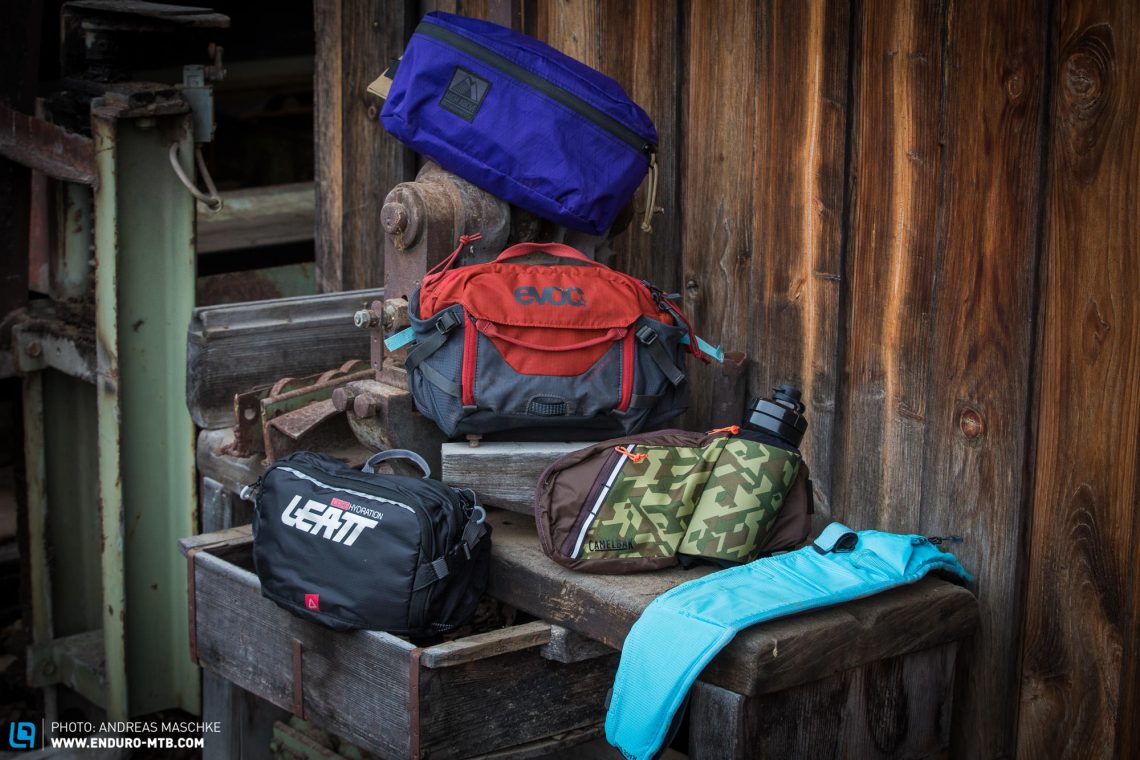
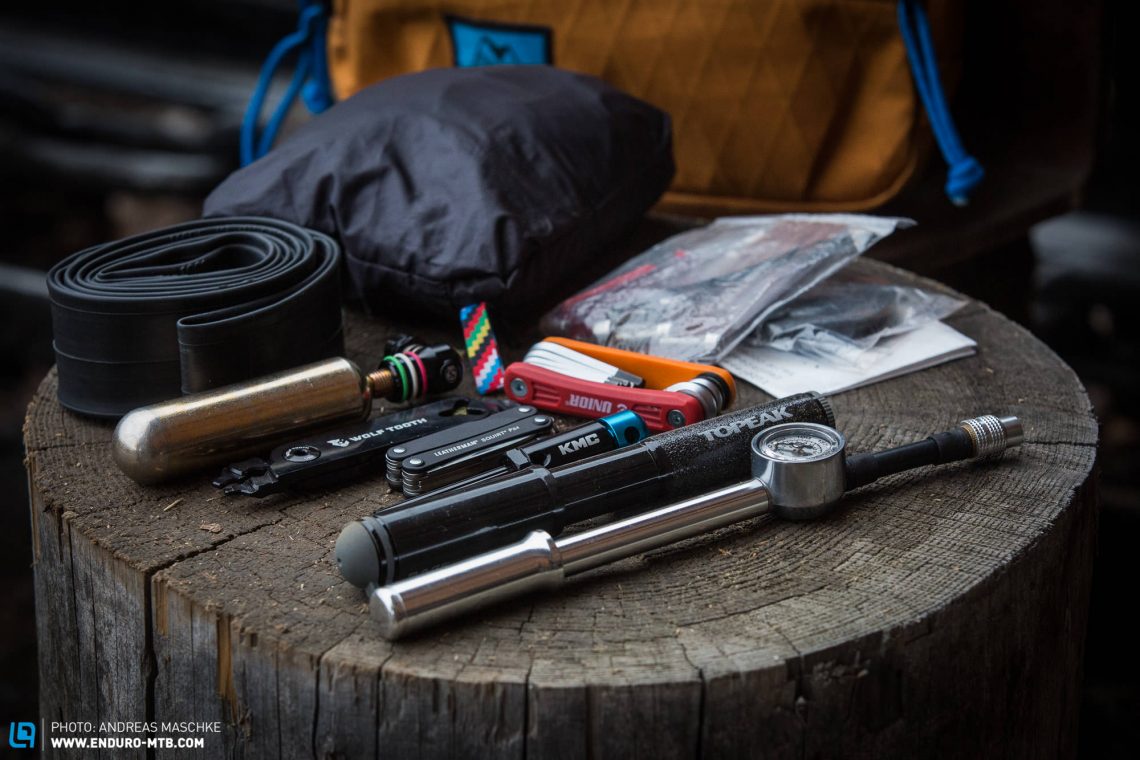
What really needs to go in a MTB waist pack?
Before you run to your local bike store and buy one, you should think about what you want to carry around in your new hip pack and what you could (or would) attach directly to your bike instead. Tip: the less that’s in your hip pack, the more comfortable it is. Can you attach a bottle cage, a spare inner tube or a mini tool directly to your bike frame? Are you putting a rain jacket in your pack? Could you use a CO2 cartridge instead of a pump? How many energy bars do you need on a ride? Do you want your new bum bag to come with a hydration bladder? Our test field can be roughly divided into three sizes.
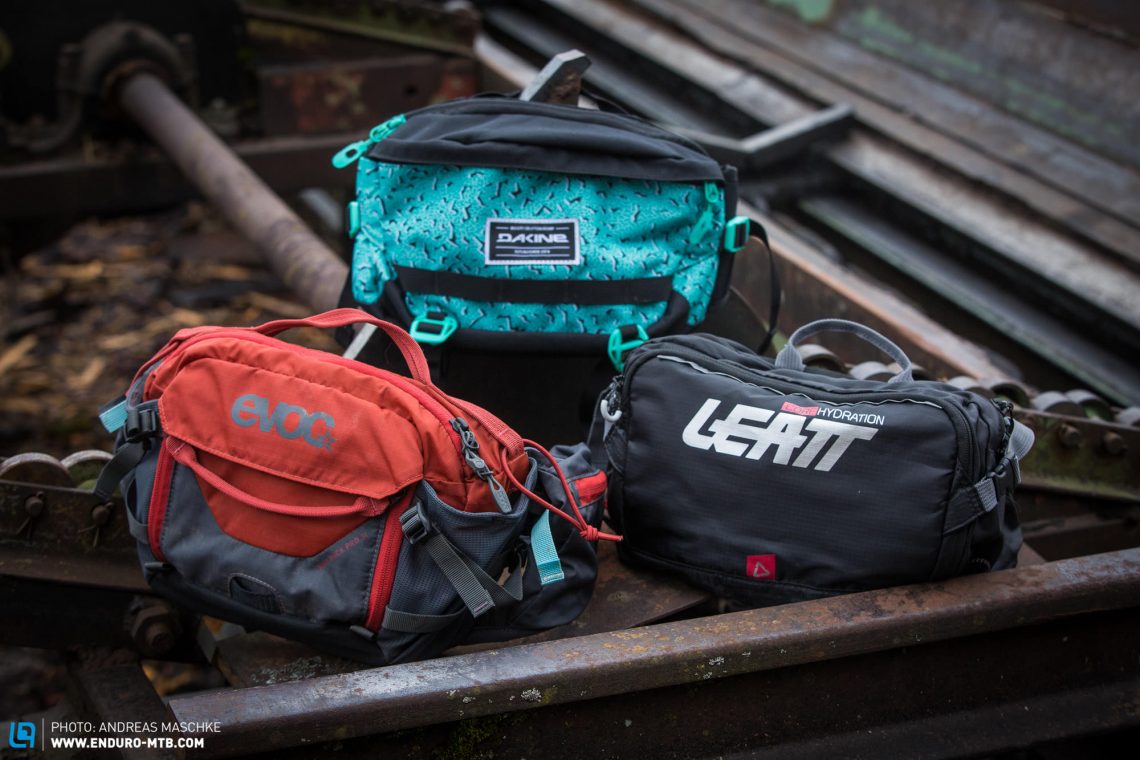
The big all-rounders in this test all have a storage volume of over 2 liters and feature an additional hydration bladder – or, at least, are compatible with one. With some models, this results in a total volume of 5 liters. Amongst these, for example, are the EVOC HIP PACK PRO 3l, the Dakine Hot Laps 5L or the Leatt Hydration Core 2.0.
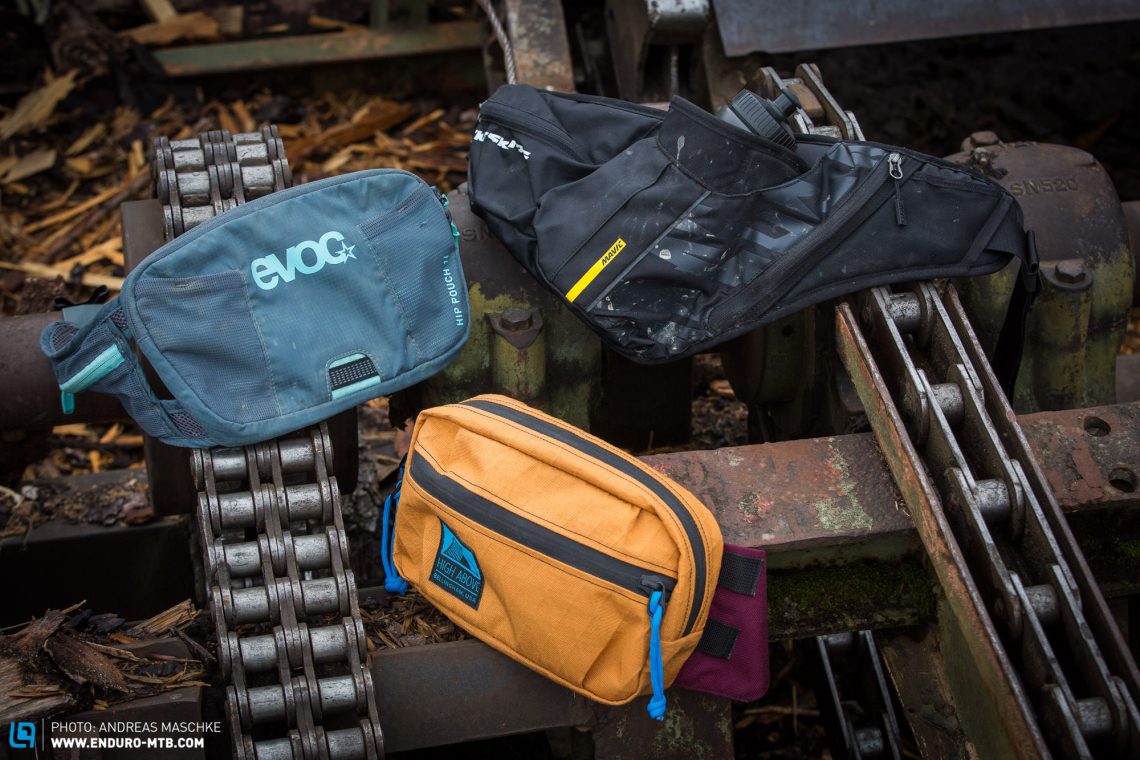
All medium-size models in our test field share a similar volume of around 1 to 2 liters. And while this concept doesn’t leave enough room for an additional hydration bladder, many manufacturers provide their packs with a bottle holder instead (e.g. Bontrager Rapid Pack, CamelBak Podium Flow, Mavic Crossride Belt). Others renounce a water supply option altogether and focus on a clever compartmentalisation and slim designs (e.g. EVOC HIP POUCH 1l, High Above Lookout Pack).

The packs in our third (and smallest) category only allow for basic riding essentials and can be worn under a jersey (e.g. EVOC RACE BELT, Dakine Hot Laps Stealth, Mavic Deemax Belt). These models are the optimal choice for racers and riders who store most of their trail essentials directly on their bike.

Where should I put my smartphone?
It’s interesting how different manufacturers give different opinions as to whether a mobile phone belongs into a hip bag or not. In this regard, there seem to be two different schools of thought. While medium-sized hip packs, like the Bontrager Rapid Pack, Mavic Crossride Belt or even minimalist solutions such as the Dakine Stealth feature a padded inner compartment big enough to store a smartphone, even some of the bigger models like the CamelBak LR 4, EVOC HIP PACK PRO and ION Traze 3 have either too little or no room at all for one. Personally, we think that a suitable compartment should be the norm, as a phone is a lot more exposed inside the pockets of your shorts and can even present an additional injury hazard. And even if you don’t use this pocket for a phone, you can store other things in it.
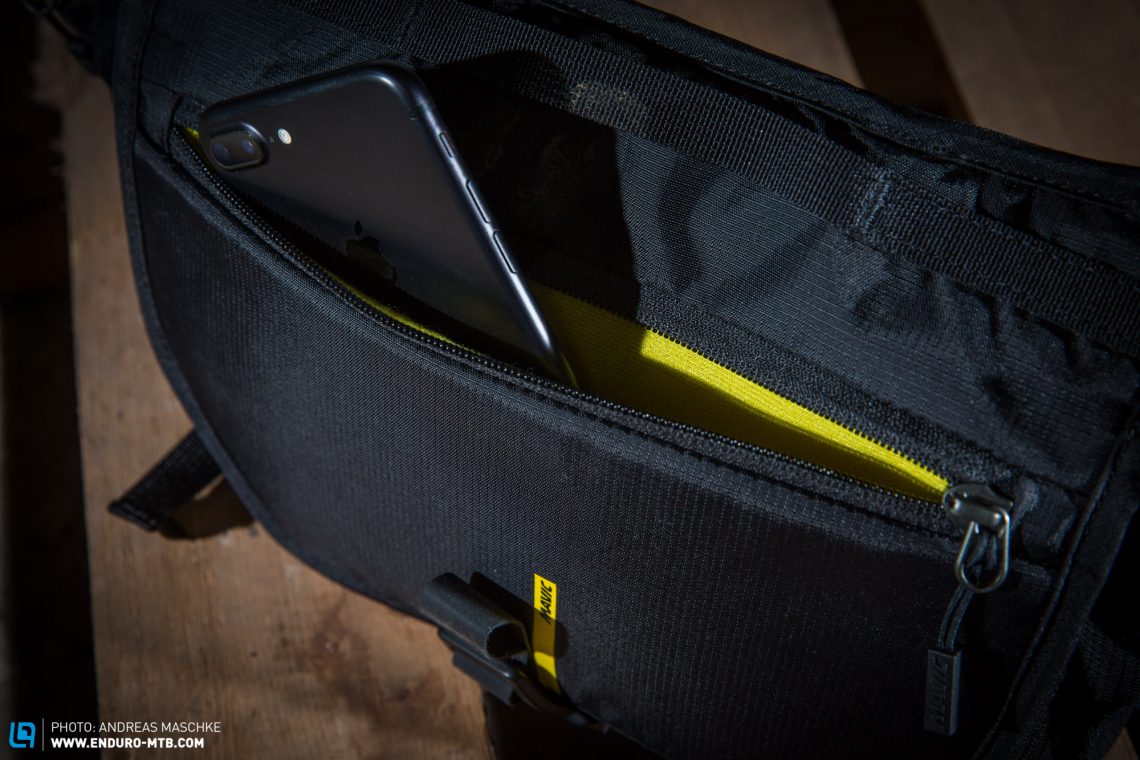
All hip packs in test
With prices ranging from € 30 to over € 100, our test field includes an exciting option for every budget. Why the broad price range? As always, the devil is in the details and there are many important factors to consider: the quality of the materials and workmanship of the bags, additional or unusual features and even optional hydration bladders can drive the price up. But since the individual needs of riders vary greatly, we decided to test all of those models which could be potentially interesting for our readers. This, however, also implies that some manufacturers are represented several times and that some of the packs are only available as direct orders from the U.S.A.. Unfortunately, the new USWE ZULO 2L was not available at the time of our test.
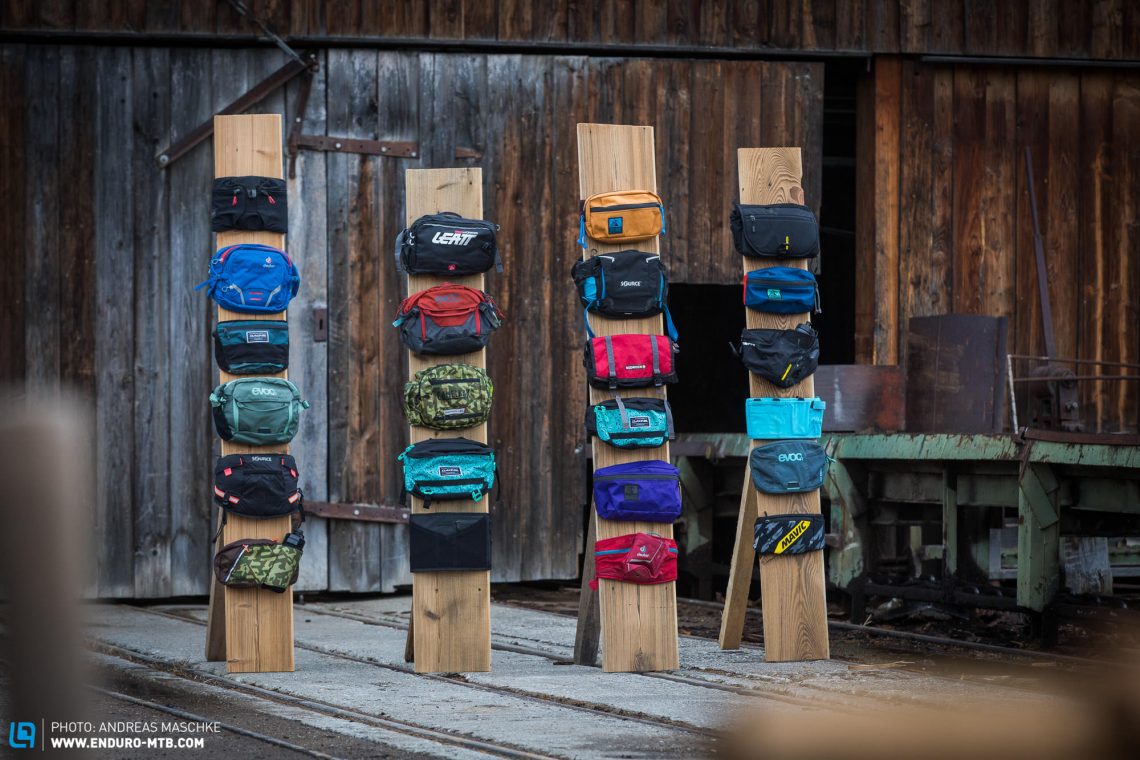
I.
| Model | Water | Weight | Price* |
|---|---|---|---|
| Bedrock Bags Greysill Hip Pack (Click for review) | – | 284 g | $ 100 |
| Bontrager Rapid Pack (Click for review) | 1 bottle holder | 225 g | € 49.99 |
| CamelBak Podium Flow (Click for review) | 620 ml bottle (included) | 187 g (+88 g bottle) | € 49.99 |
| CamelBak Repack LR 4 (Click for review) | 1.5 l bladder (included) | 337 g (+190 g bladder) | € 79.99 |
| Dakine Hot Laps 5L (Click for review) | 2 l bladder (included) | 326 g (+132 g bladder) | € 69.95 |
| Dakine Hot Laps 2L (Click for review) | 1 bottle holder | 209 g | € 39.95 |
| Dakine Hot Laps Stealth (Click for review) | – | 143 g | € 34.95 |
| Deuter Pulse 3 (Click for review) | 1.5 l bladder (optional) | 341 g (+170 g bladder) | € 49.95 (+ € 34.95) |
| Deuter Pulse 2 (Click for review) | 1 bottle holder | 144 g | € 29.95 |
| EVOC HIP PACK PRO 3l (Click for review) | 2 bottle holders, 1.5 l bladder (optional) | 428 g (+139 g bladder) | € 90 (+ € 30) |
| EVOC HIP PACK RACE 3l (Click for review) | 1.5 l bladder (optional) | 366 g (+139 g bladder) | € 65 (+ € 30) |
| EVOC HIP POUCH 1l (Click for review) | – | 221 g | € 45 |
*in brackets: additional price for optional hydration bladder or surcharge for integrated bladder

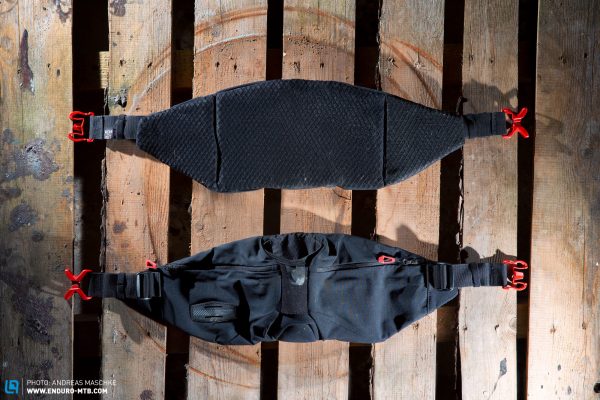
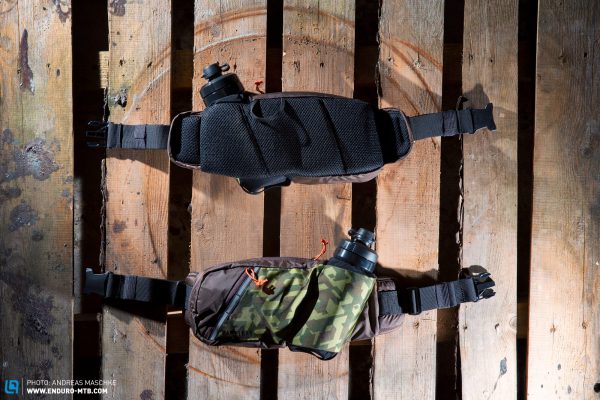
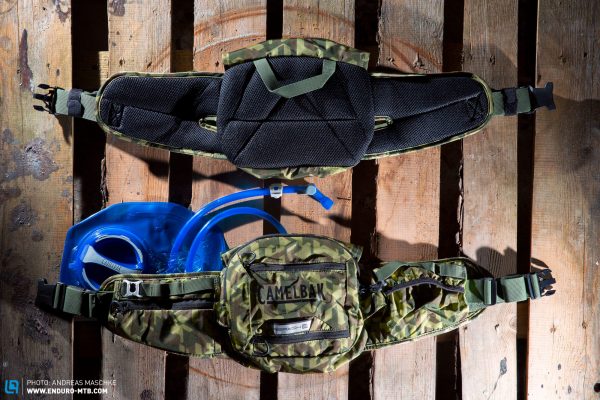
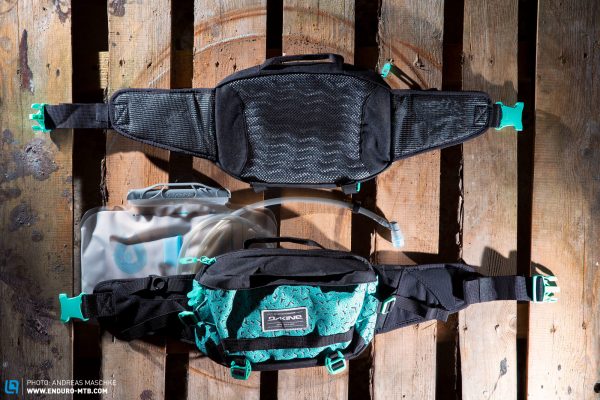
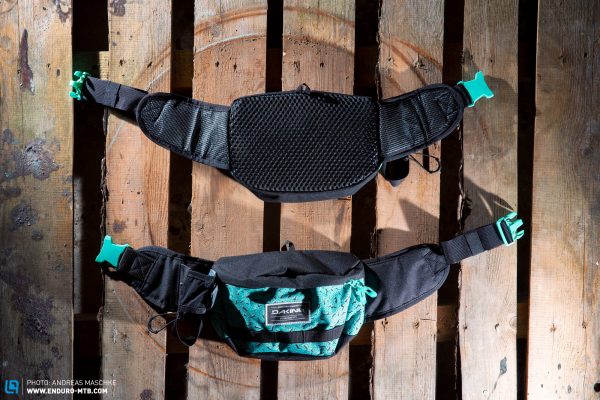
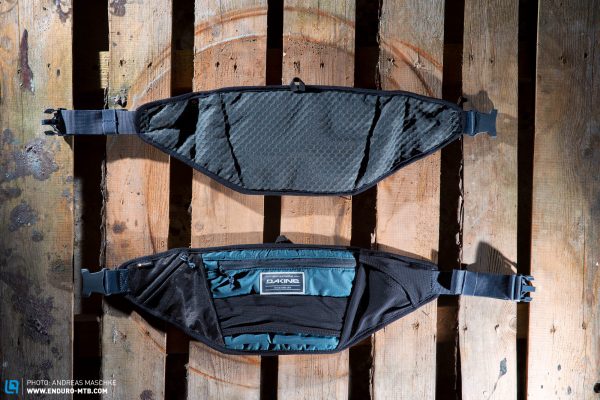
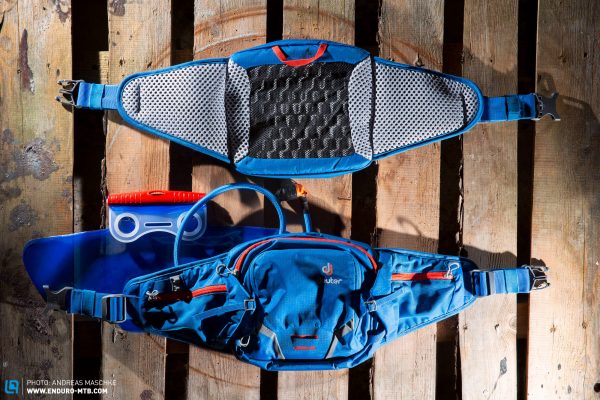

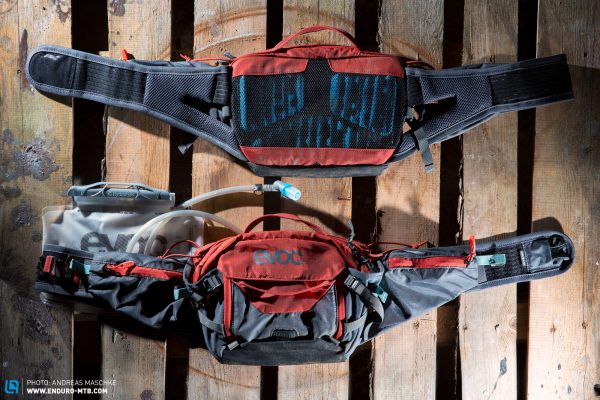
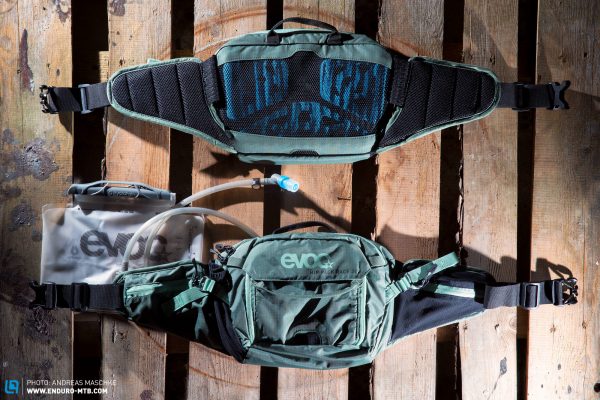

II.
| Model | Water | Weight | Price* |
|---|---|---|---|
| EVOC RACE BELT (Click for review) | – | 187 g | € 44.99 |
| High Above Cascadia (Click for review) | 1 bottle holder | 220 g (+34 g bottle holder) | $ 100 |
| High Above Lookout (Click for review) | 1st bottle holder included, 2nd bottle holder optional (+ $ 20), Fidlock version (+ $ 20) |
251 g (+39 g bottle holder) | $ 110 |
| High Above Das Radpack (Click for review) | – | 220 g | $ 60 |
| ION Hipbag Traze 3 (Click for review) | 2 l bladder (optional) | 399 g (+142 g bladder) | € 69.95 (+ € 20) |
| Leatt Hydration Core 2.0 (Click for review) | 2 l bladder (included) | 289 g (+134 g bladder) | € 89.90 |
| Mavic XA 3L Belt (Click for review) | bottle holder | 355 g | € 80 |
| Mavic Crossride Belt (Click for review) | 600 ml bottle incl. | 257 g (+68 g bottle) | € 70 |
| Mavic Deemax Belt (Click for review) | – | 174 g | € 50 |
| Race Face Rip Strip (Click for review) | – | 177 g | € 49.90 |
| SOURCE Hipster 1.5L (Click for review) | 1.5 l bladder (included) | 237 g (+195 g bladder, +98 g strap) | € 89 |
| SOURCE Hipster Ultra 5L (Click for review) | 1.5 l bladder (included) | 385 g (+190 g bladder) | € 99.90 |
*in brackets: additional price for optional hydration bladder or surcharge for integrated bladder
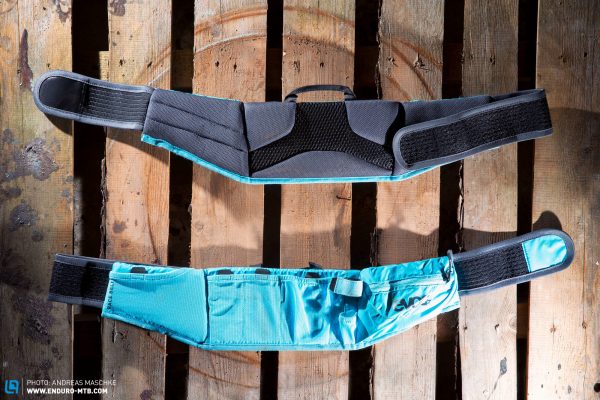



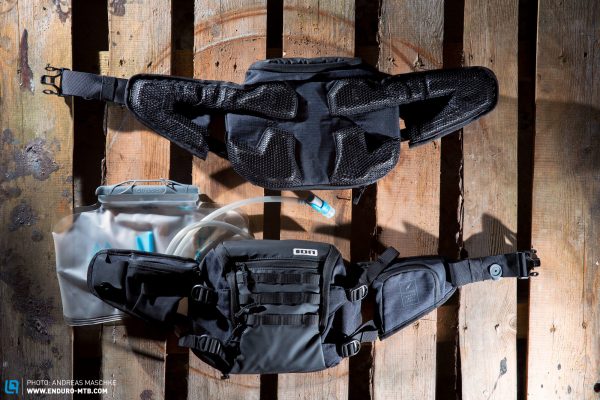

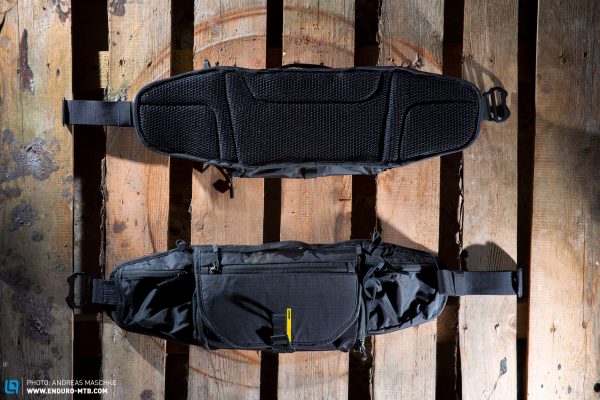
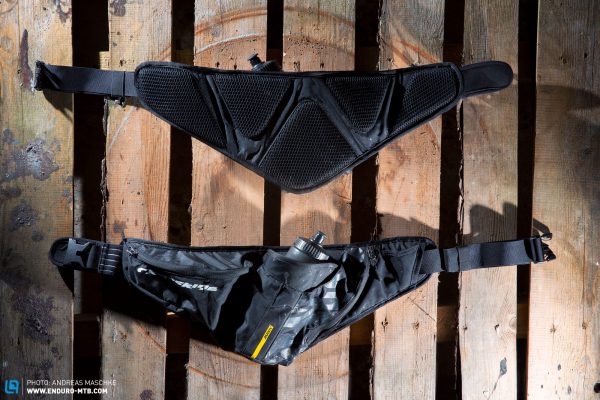
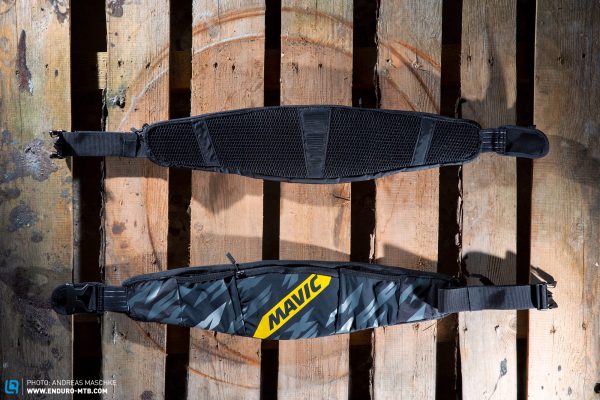
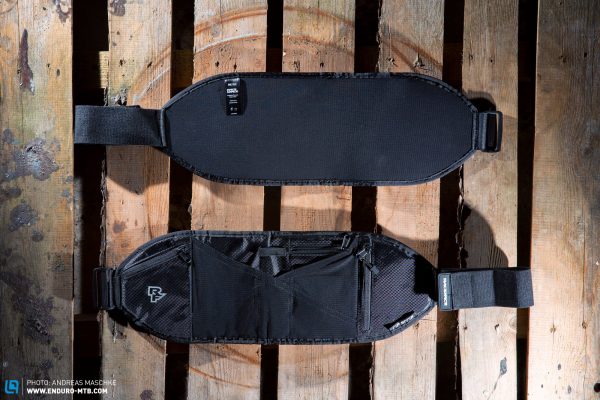

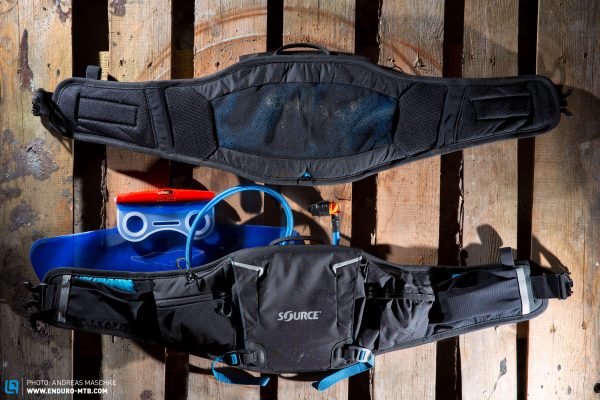
Incidentally, the country of manufacture is a major cost factor. If the packs are produced in large quantities in Asia, production costs account for a much lower proportion of the retail price than those handmade in small batches in the USA. In addition to pure functionality, our price-performance assessment takes into account this factor. The two US brands in this test, Bedrock Bags and High Above, also offer extensive customization options for their products – something you won’t get with any other manufacturer.

How did we test and evaluate the hip packs?
Without a doubt, the fit, level of comfort and stability of a pack were the most important criteria in this test. In other words, the less you can feel the bag and its contents, the better. Once we assess these criteria, we evaluate the compartment layout and determine how well the contents are distributed inside the pack and how quickly and easily you can access each item. The processing and material quality, water resistance, ventilation and sweat absorption as well as special features such as hydration bladders and/or bottle holders also affect the overall rating. The criteria are as follows:
- Comfort (uncomfortable – unobtrusive)
How comfortable is the fanny pack? Does it cause any pressure points or does it rub against the back? - Stability (low – high)
Are the contents well secured? Does the bag slip or bounce around? Are the straps coming loose? - Compartment layout (poor – excellent)
How well is the space organised? Are the compartments layed out sensibly and is there enough space for all important items? How versatile is the bag? - Climate (unpleasant – pleasant)
How warm does it get under the waist pack? How much sweat does it absorb? How fast does it dry? - User friendliness (straight forward – fiddly)
How easily can you attach the bum bag to your body? How easy is it to adjust the fit and quickly can you access the contents? - Price/performance (poor – very good)
How good is the price/performance ratio?
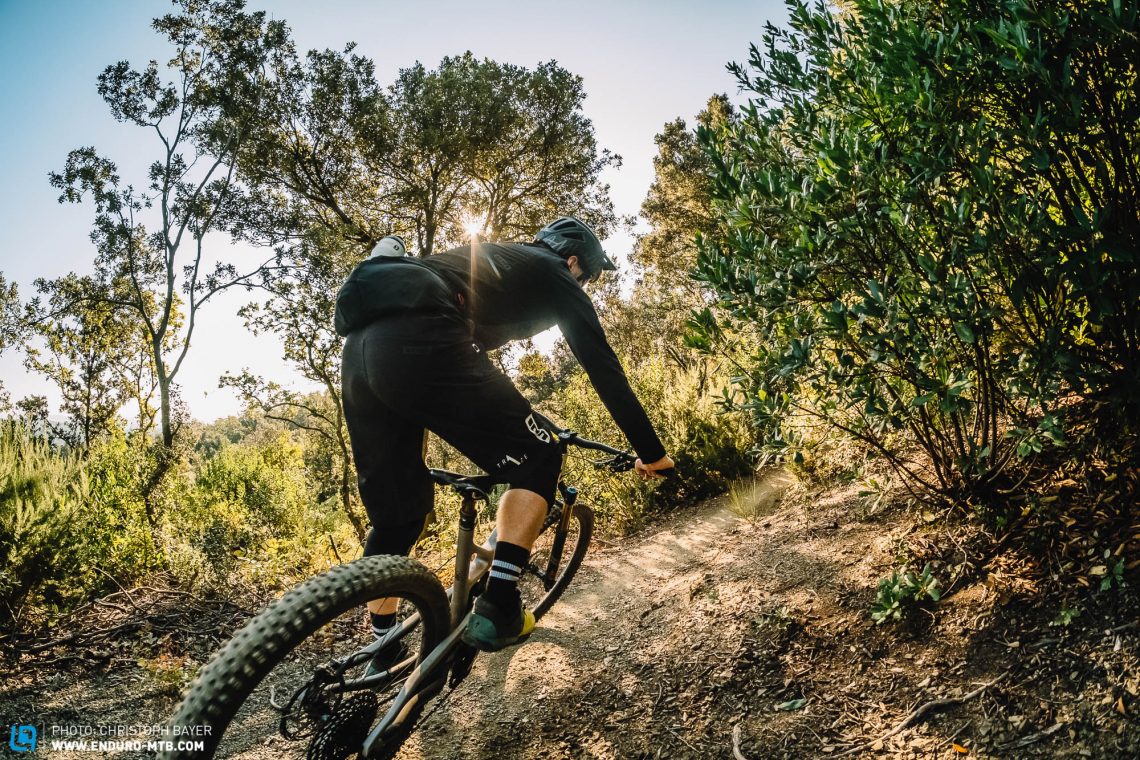
To allow for as many impressions as possible, each hip bag was tested over a period of half a year by a number of testers with different needs, body proportions and layout preferences. This enabled us to cover the complete range of applications over an extended period of time and to test each pack in a variety of scenarios, from relaxed day rides to fast paced and stressful racing scenarios. In addition, all bags were tested back to back by several riders on a fixed trail section, both up and downhill. This approach allows us to counteract the habituation effect and determine all major differences and conspicuous features as neutrally as possible.
The correct position is crucial:
The correct position of a hip bag is crucial to its fit, comfort and stability. As the name suggests, hip packs are intended to be worn as low on your hips as possible for optimal stability. During our tests we found that each pack had its own sweet-spot too, so it just takes some experimenting to get the position right. Unfortunately, our test field also includes some models that are missing a sweet spot altogether and didn’t really agree with any of our testers body shape (e.g. Race Face Rip Strip or the Deuter models in this test).

In this test we also found out that some of the models only work with certain body shapes and heights. While the Deuter Pulse 3, for example, sits noticeably better on wider hips, with less athletic bodies the ION Traze 3 tends to lose its stability and the Dakine Hot Laps Stealth starts feeling uncomfortable.
How important is the ventilation of a hip bag?
Clearly more compact and less spread across your back than a full sized backpack, we can say that hip packs are already on a winning tangent in terms of airflow. In order to prevent the bag from wobbling around on the trail, a close-fit is essential though. Therefore, the ventilation of a waist pack is only of secondary importance compared with the fit. Sweat absorption, on the other hand, is a more exciting factor. While some bags feel like wet rags when you put them back on after a short break, others barely soak up the sweat and are as good as dry after five minutes in the sun – the clever design and choice of material are mainly responsible for this.
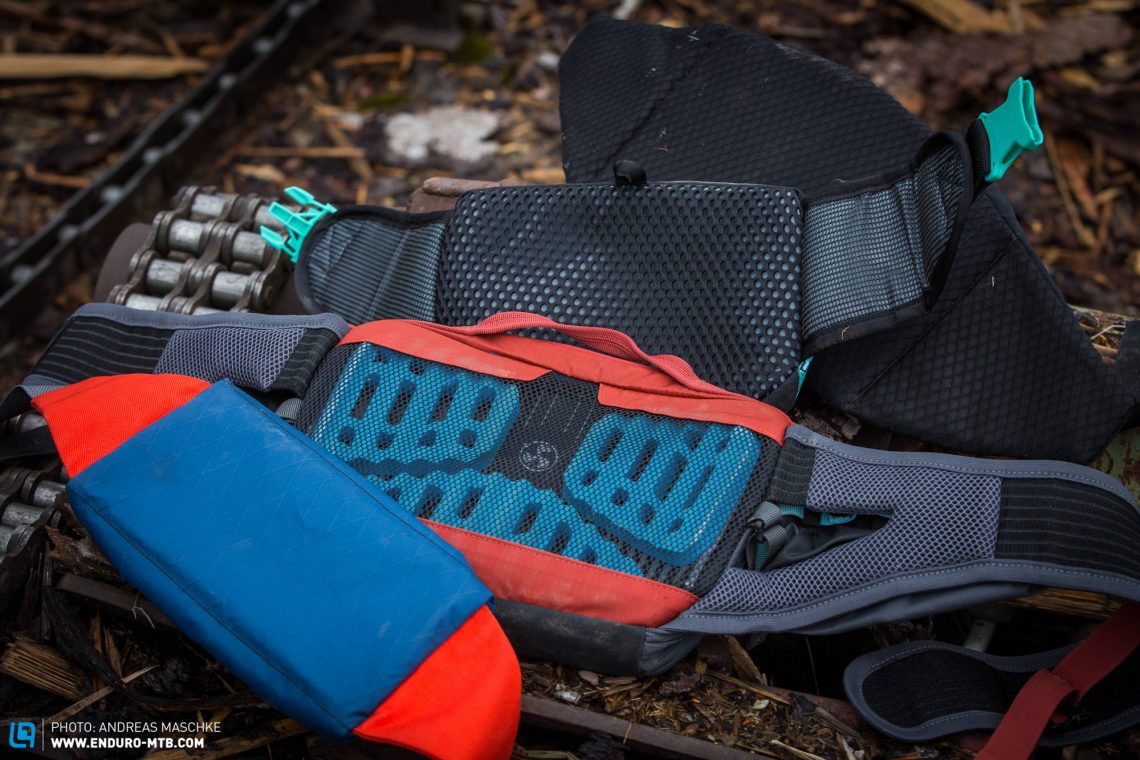
Less is more!
Throughout our test it became increasingly evident that overfilling (or in some cases even just filling it to the maximum capacity) a hip pack is pretty detrimental to its performance. So even if the hydration bladder can hold lots of fluid, we wouldn’t risk filling it to the brim – usually a litre will suffice on short rides and it’ll pay off with increased comfort. Another easy way to save space and weight? Use a strap to attach your spare inner tube and mini tool directly to the bike frame – where possible and if necessary. You can use the extra room in the pack for a few extra energy bars … your riding buddy who always seems to forget to bring his own will be grateful;)
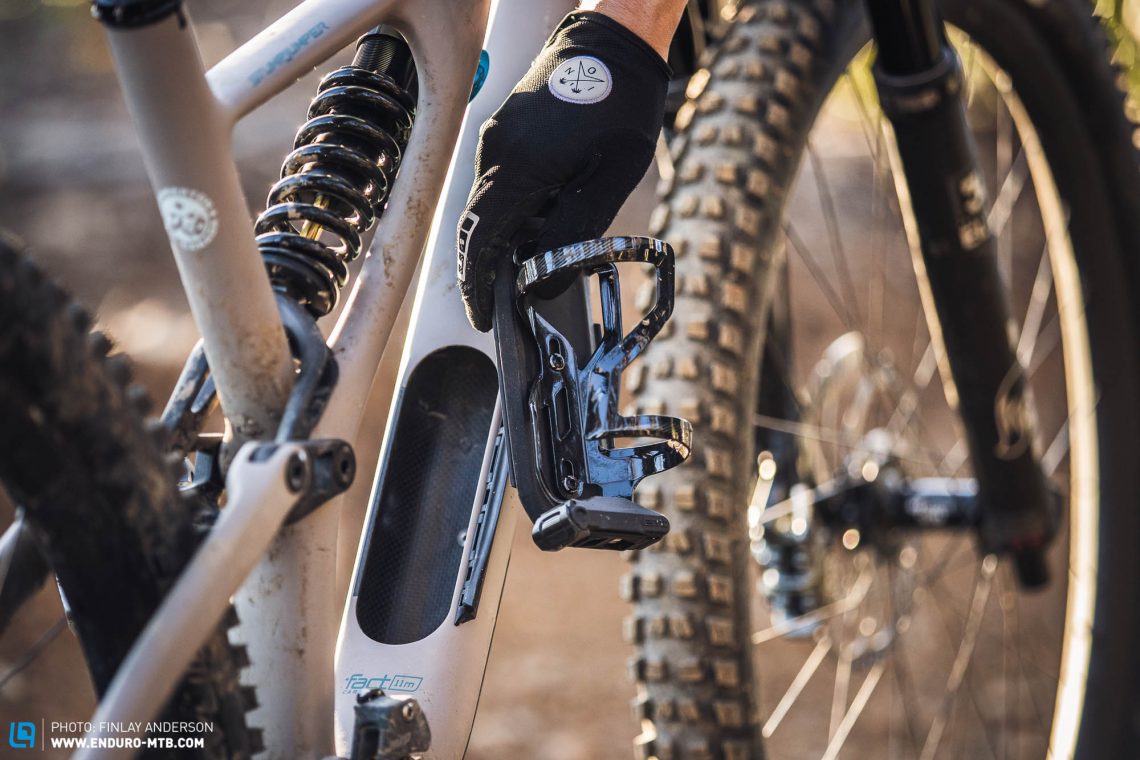
Exciting alternatives to hip packs
Instead of freeing up your upper back, you could go the other way and wear a minimalist Hydration Pack to free your hips. The CamelBak Chase Bike Vest, SOURCE Rapid Hydration Pack or USWE VERTICAL 4 PLUS or AIRBORNE 3 models offer a similar amount of storage room at the same weight of a hip pack. For water bladder users, these might even be the better choice, because the load is more evenly distributed, fixed more efficiently and usually also turns out larger in terms of water volume. Bib shorts or base layers with integrated pockets (e.g. from Specialized, Scott, Race Face and Patagonia) work similarly to a hip bag. The trousers especially are getting increasingly popular and hold the content firmly in place. However, the capacity is limited and as soon as you start sweating all of the contents get wet too.

Our Best in Test: the EVOC HIP PACK PRO
After five months of relentless testing, our favourite ‘best all-round hip bag’ emerged. No waist pack managed to combine carrying comfort, stability, compartment layout and universal usability as well as the EVOC HIP PACK PRO 3l did. In addition, the climate is outstanding, even without activating the VENTIFLAP system to increase ventilation on long hot climbs. With two bottle holders and an optional hydration bladder, you’re spoilt for choice when it comes to deciding how to carry your water supply. And while this is the heaviest model in test, we never noticed it because the excellent compression system allows for an optimal seat and very comfortable fit. Overall, there is practically nothing the EVOC HIP PACK PRO 3l can’t do. Thus, it secured our Best in Test badge as the best all-rounder in our big hip pack test.
Here you’ll find our in depth test of the EVOC HIP PACK PRO.
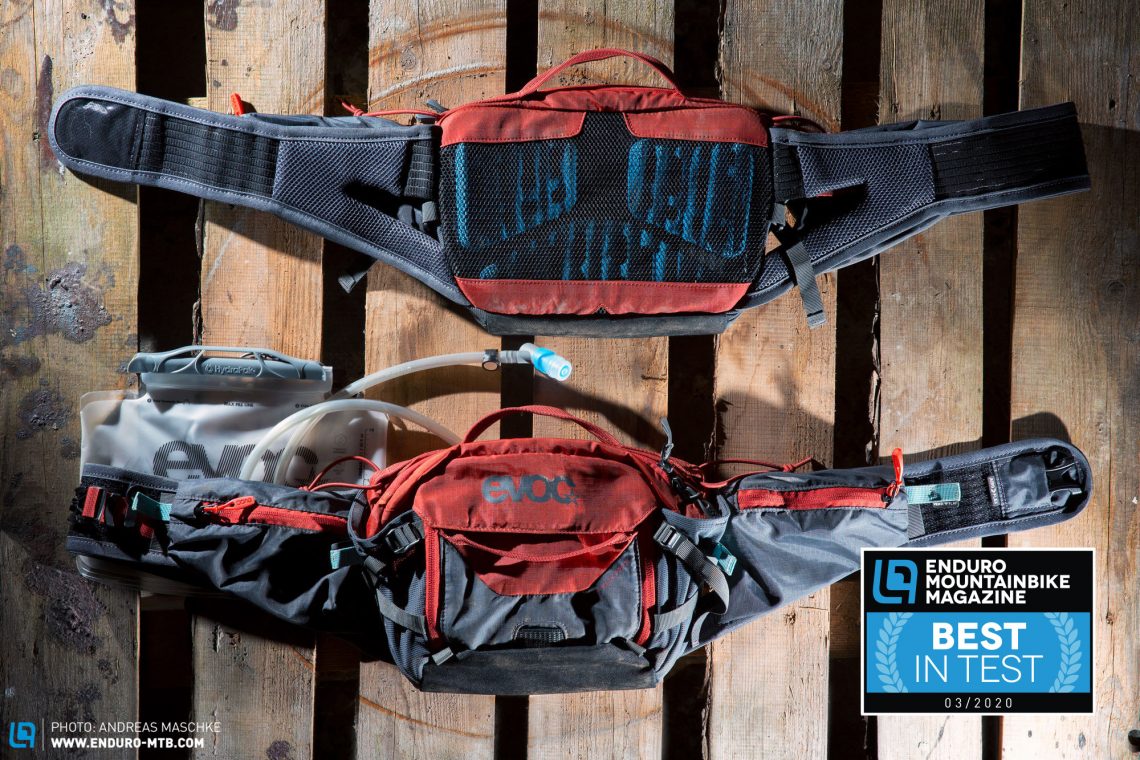
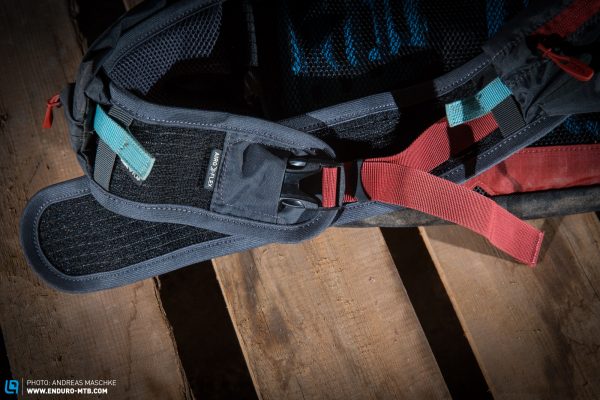
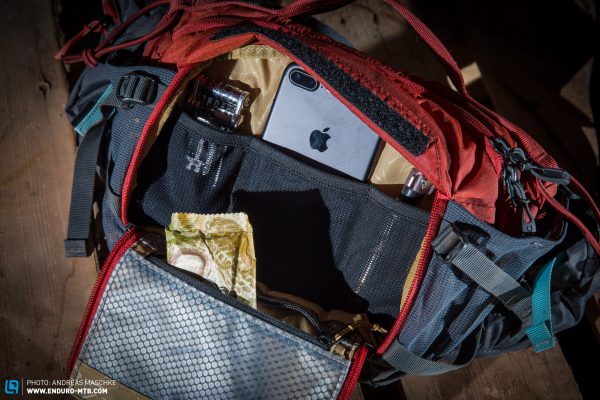
The best affordable option: the Dakine Hot Laps 2L
However, the superb performance of the EVOC comes at a price and not everyone is prepared to pay € 90 (or even € 120 with the bladder) for a fanny pack. That’s where the Dakine Hot Laps 2L comes in – and we were totally impressed with it. For just € 40, you’ll get an outstanding, well thought out compartment layout with a well padded mobile compartment, good wearing comfort and a stable, unobtrusive fit. And despite its compact dimensions, the Dakine Hot Laps 2 L even lets you carry water on your ride. The fold-out bottle holder holds a water bottle securely in place and can be easily stowed away when not in use. Despite its compact size, the Dakine Hot Laps 2L is an excellent all-rounder at a slim price – and thus deserves our coveted Best Buy badge.
Here you’ll find our in-depth test of the Dakine Hot Laps 2L.
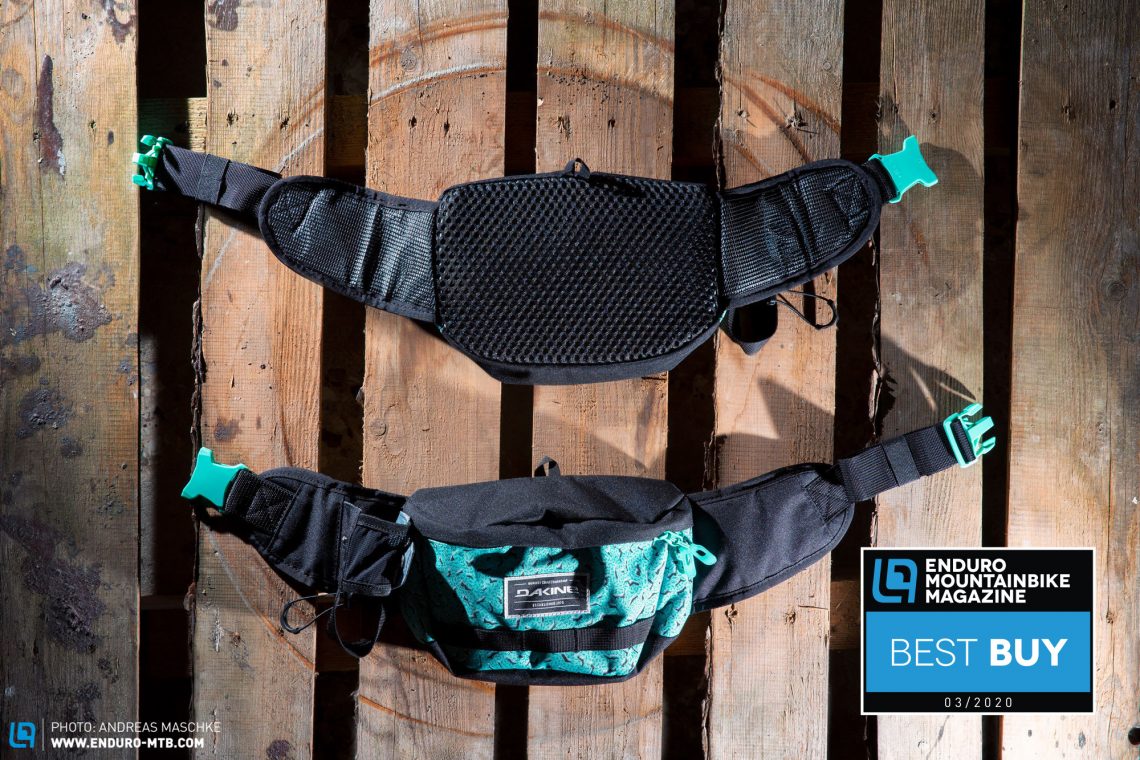

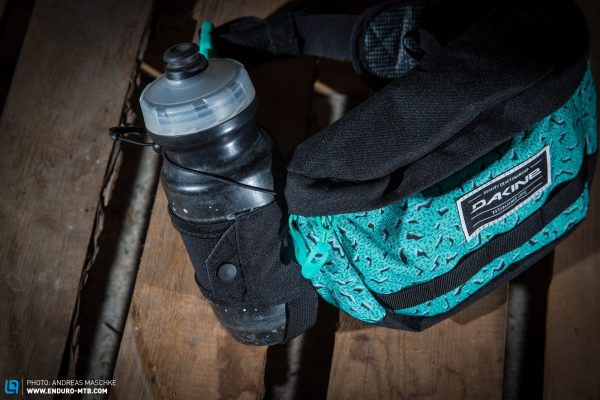
Even more excellent hip pouches
Since the main focus of this test is on all-round performance, more specific hip bags are at a slight disadvantage when it comes to winning this test. Nevertheless, there are other excellent hip packs in this test which might not be as polivalent, but could even be a better option for certain applications.
With its huge storage capacity and flexible layout, the Bedrock Bags Greysill Hip Bag (to the test) is the true packing wonder in this test. Despite its lightweight, the four compression straps and perfect fit make it one of the most stable hip packs in this test – no matter how much or little you fill it. Unfortunately, the inside only has a few compartments and it can take some time to access them due to the multi-layer closing system.
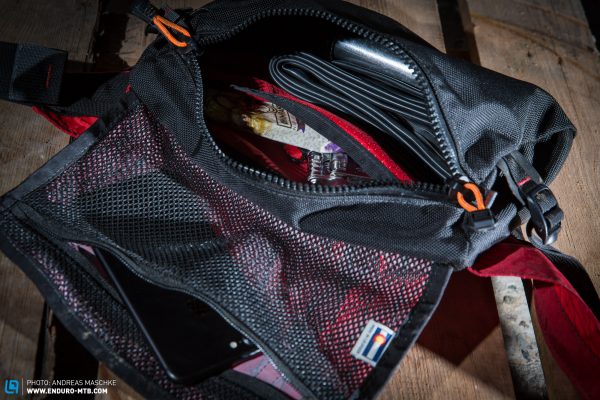
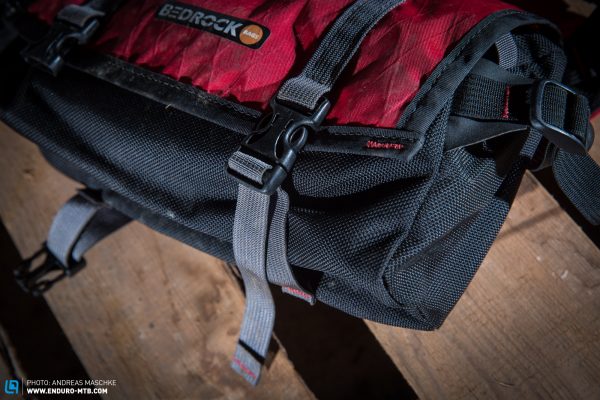
If your current bike doesn’t have a bottle cage, like the YT CAPRA or Nukeproof Mega, or if you just want to carry an extra water bottle, the Bontrager Rapid Pack (to the review) and Mavic Crossride (to the review) are two great options with an integrated bottle holder as a key feature. The Bontrager is incredibly comfortable, has a stable fit and is also unobtrusive. On top of this, it offers one of the best compartment layouts in the entire test field – provided you don’t have to carry a pump. If you prefer bringing a pump with you, the Mavic pouch is the better option. Like the Mavic, it has an excellent (albeit completely different) compartment layout and extra space for a pump – and also has the best bottle access. However, you’ll have to compromise with some minor drawbacks, like the smaller phone compartment (compared to the Bontrager), the proprietary triangular bottle and the higher price.
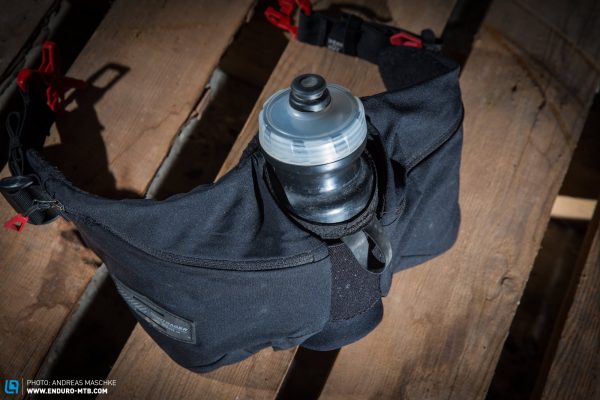
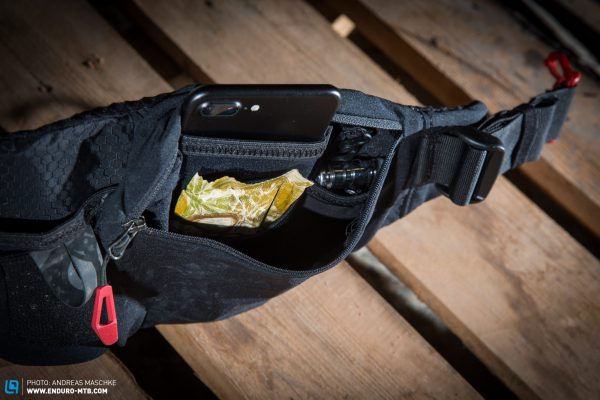

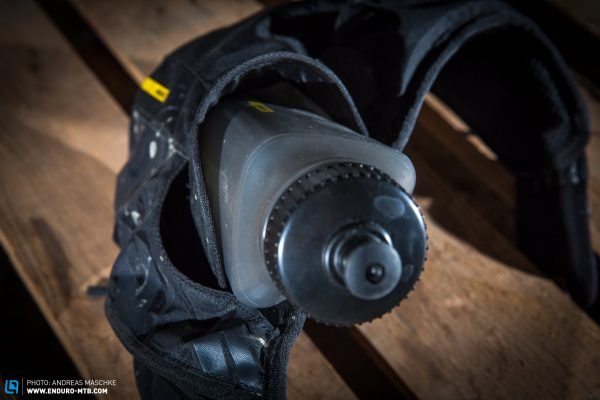
If you want a compact bum bag and don’t need to carry around water but still want to have all of the trail essentials on them, you should take a closer look at the slim EVOC HIP POUCH 1l (to the review) and stylish High Above Lookout (to the review). Both models are compact and very robust no-nonsense waist packs with a very good compartment layout – fully recommended.
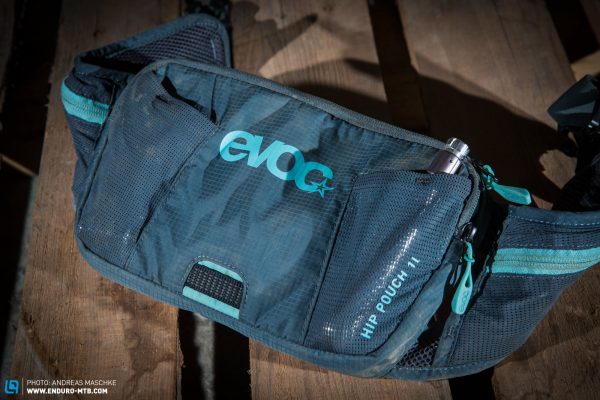
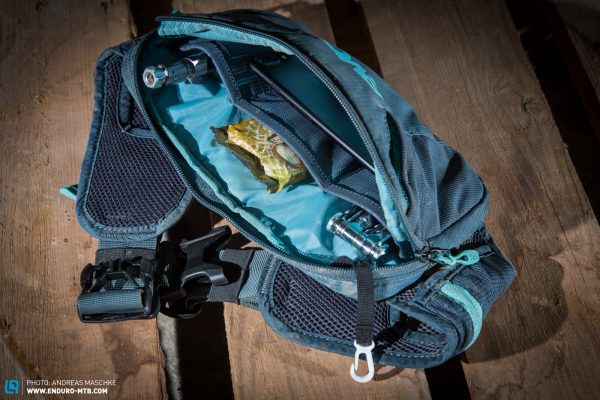
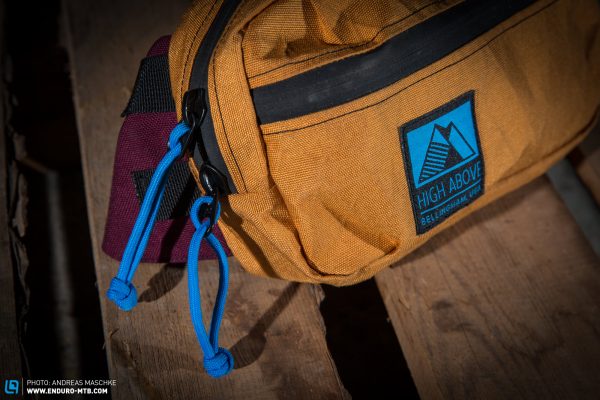
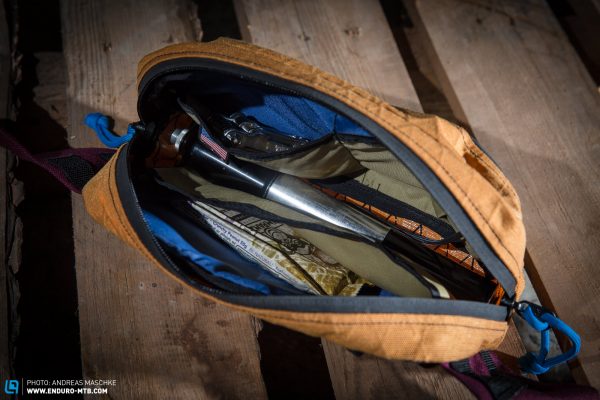
This test also includes two excellent options for minimalists. The EVOC RACE BELT (to the test) lives up to its name and gives you fast and easy access to all your trail essentials while providing outstanding comfort and top stability. Our top tip for racers. If you’re after something a little less specialized but still want to enjoy the advantages of a slim pack, the Dakine Hot Laps Stealth (to the test) is your best choice. Just as the Evoc, Dakine’s super slim fanny pack disappears under the jersey and has a very good and versatile compartment layout – and a compact phone compartment. Fit and comfort are not quite as flawless as with the EVOC, but still excellent. And for € 35 you can’t really go wrong.
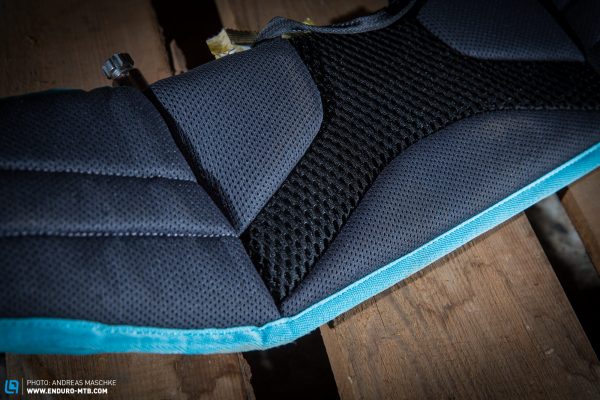
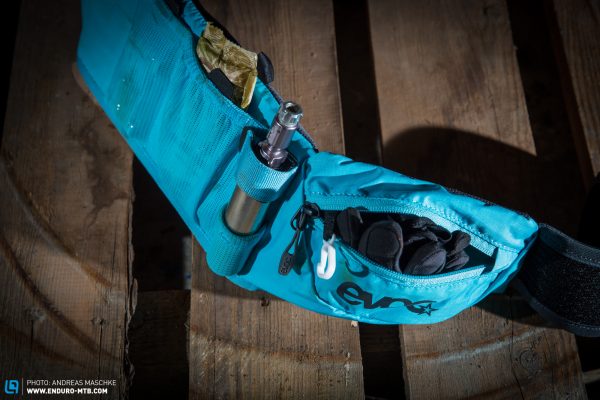
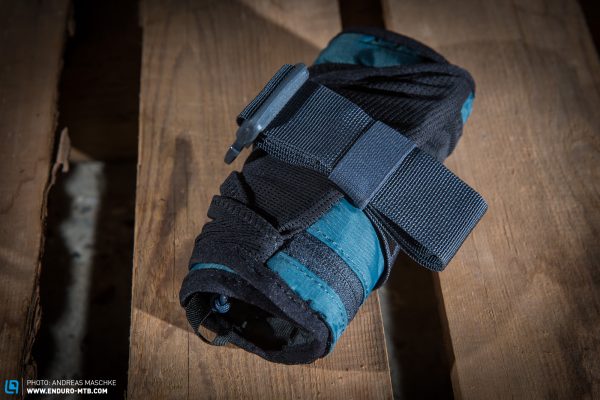
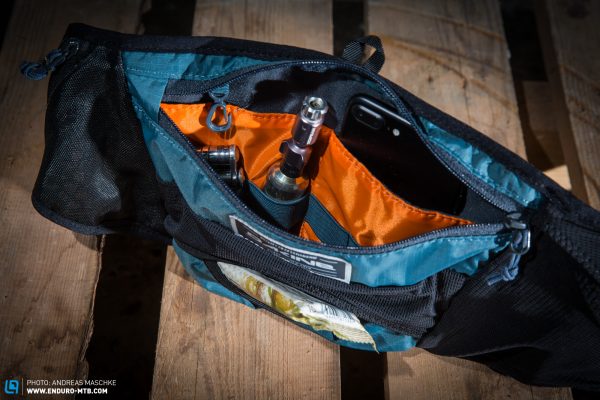
These hip packs didn’t cut it for us
Whilst most of the packs in this test made a consistently positive impression, others left a bitter taste in our mouths. These models have either disappointed us strongly in one regard or weren’t able to convince us at all. As a consequence, we won’t recommend any of them.
The brand-new ION Hipbag Traze 3 (to the test) bears an exciting new concept that allows for easy loading and strikes with an excellent climate and – at least for slim people – good stability. The fit and comfort, however, are only average. On top of this, the hip fins are too short and bulky, with the stiff padding causing unpleasant pressure points. Here we urge ION to start working on the next generation Traze 3.
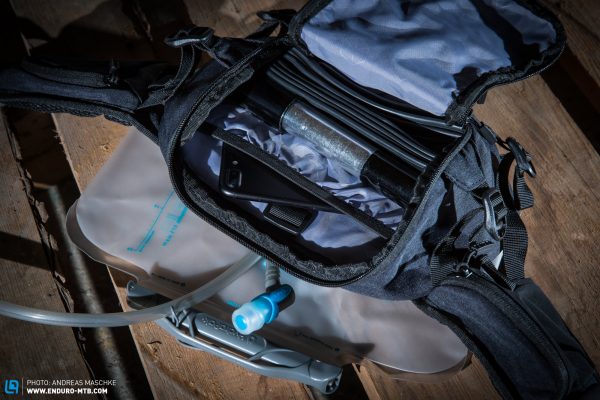
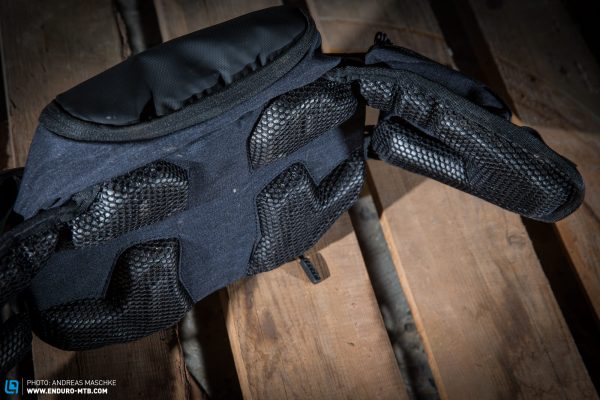
Whilst both Deuter packs managed to impress our testers with quality materials, good workmanship and a very decent price, their fit is either peculiar (Pulse 3) or not suitable for cycling (Pulse 2) at all. Depending on how tightly you pull the hip belt, when you get into a more aggressive riding position with the upper body bent over the handlebars, the pack doesn’t sit properly and slides up the back or affects the abdominal breathing. On top of that, the Pulse 2 has a very poor compartment layout and doesn’t protect the contents from the elements. Talking about bad performance, the compression straps of the Pulse 3 don’t do anything. Deuter is known for making good bike-specific backpacks. Their fanny packs however are designed following a multisport orientation and to fit an upright body position, which makes them unsuitable for cycling.

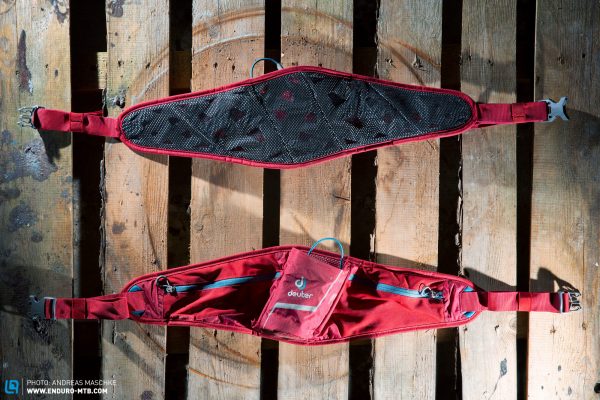
All in all, the Leatt Hydration Core 2.0 (to the test) isn’t actually that bad. It’s spacious, very lightweight and offers a well-organised compartment layout and good basic level of comfort. However, the pack doesn’t compress against the body as it’s meant to and the thin outer material makes the pack itself feel extremely unstable, even with the lightest load. On top of this, the quality of the finish and materials is rather poor considering the price.


Also poorly made in places and relatively expensive is the Mavic Deemax Belt (to the test). Our main criticism, however, goes to the promised payload, which doesn’t make sense in the real world. If you fill the pack following the description printed on the inside, the Deemax will quickly overflow even with half of the items listed on the description, feeling plump and uncomfortable.
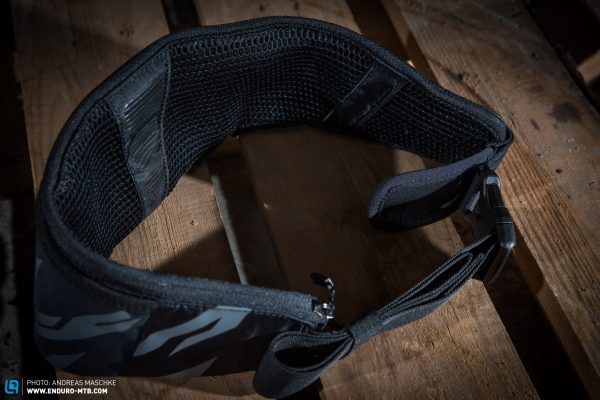
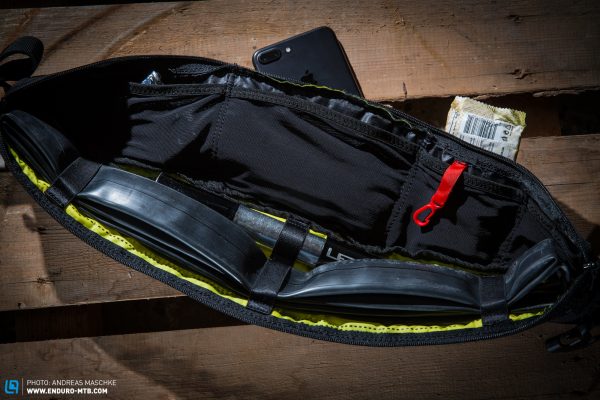
The Race Face Rip Strip (to the test) is the tail light of our test field. Except for the flat design and stability, there’s nothing nice we can say about it. None of our test riders walked away from this test with a positive impression regarding fit, comfort or the compartment layout. Added to this is the questionable placement of the CO2 cartridge/pump directly on the spine – let alone the steep price. After five years on the market, it’s time to work on a new version.
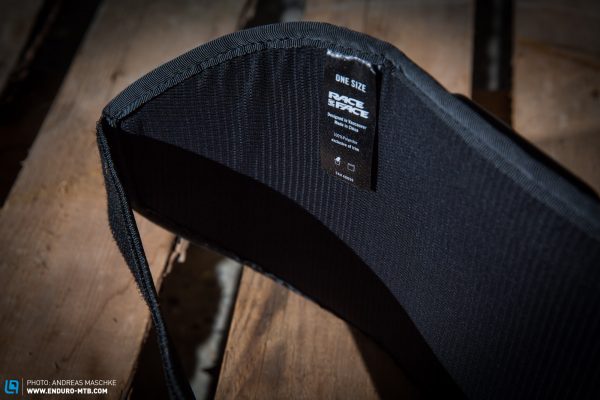
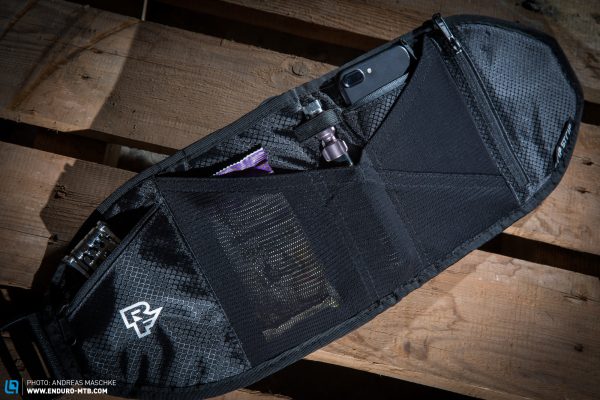
All hip packs in review: Bedrock Bags Greysill Hip Pack (Click for review) | Bontrager Rapid Pack (Click for review) | CamelBak Podium Flow (Click for review) | CamelBak Repack LR 4 (Click for review) | Dakine Hot Laps 5L (Click for review) | Dakine Hot Laps 2L (Click for review) | Dakine Hot Laps Stealth (Click for review) | Deuter Pulse 3 (Click for review) | Deuter Pulse 2 (Click for review) | EVOC HIP PACK PRO 3l (Click for review) | EVOC HIP PACK RACE 3l (Click for review) | EVOC HIP POUCH 1l (Click for review) | EVOC RACE BELT (Click for review) | High Above Cascadia (Click for review) | High Above Lookout (Click for review) | High Above Das Radpack (Click for review) | ION Hipbag Traze 3 (Click for review) | Leatt Hydration Core 2.0 (Click for review) | Mavic XA 3L Belt (Click for review) | Mavic Crossride Belt (Click for review) | Mavic Deemax Belt (Click for review) | Race Face Rip Strip (Click for review) | SOURCE Hipster 1.5L (Click for review) | SOURCE Hipster Ultra 5L (Click for review)
Did you enjoy this article? If so, we would be stoked if you decide to support us with a monthly contribution. By becoming a supporter of ENDURO, you will help secure a sustainable future for high-quality mountain bike journalism. Click here to learn more.
Words: Aaron Steinke Photos: Andreas Maschke, Christoph Bayer




